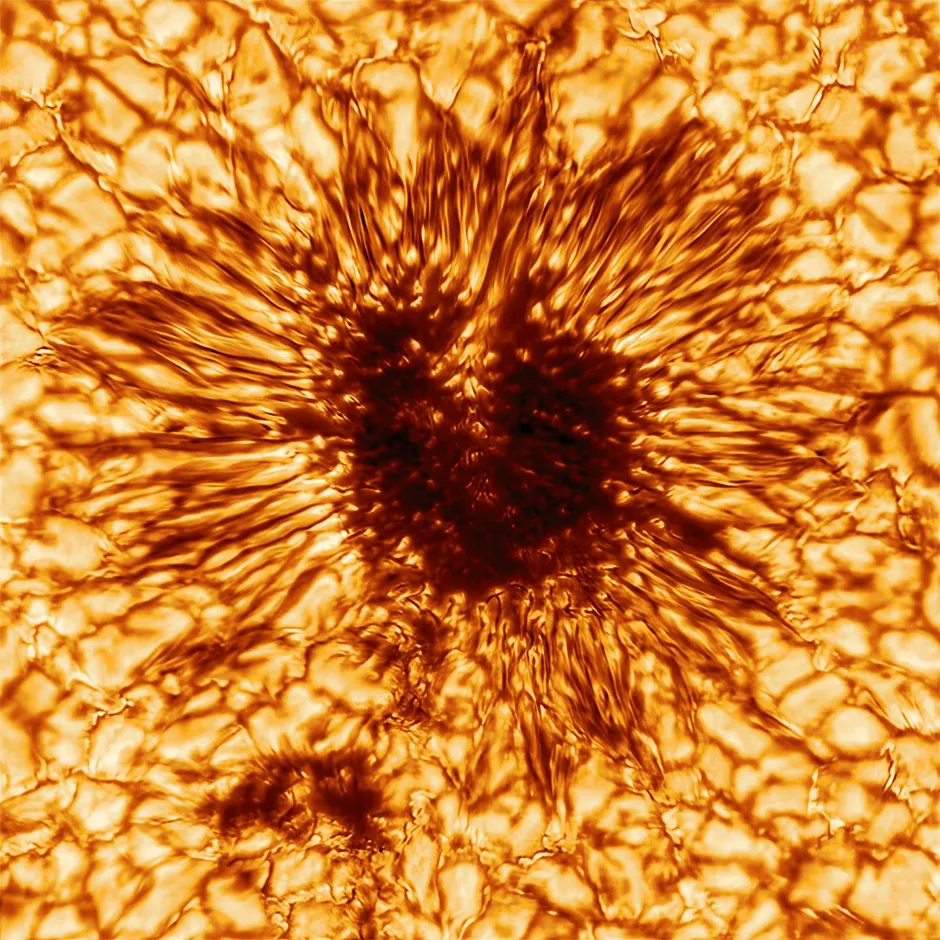The Sun has apowerful magnetic fieldwhich slowly flips its poles every 11 years. Throughout this solar cycle, researchers monitor the Sun’s surface, with more sunspots indicating increased activity.
As a new 11-year solar cycle began last year, researchers have been working to better capture details of these sunspots.Now, a team of scientists in Hawaii captured the most in-depth image of a sunspot yet at the largest solar observatory in the world.More than 20 years in the making, the advanced technology of the National Science Foundation’s (NSF) Daniel K. Inouye Solar Telescope provides new solar insight.
Dr Thomas Rimmele, Associate Director at the NSF’s National Solar Observatory, released the image alongside an overview of the observatory in a recently published paper."It's really exciting to see the Sun and sunspots with this extremely high resolution, and see so many details that we've never had before," said Dr Rimmele of the advances achieved with this new technology. Calledadaptive optics, this technology corrects the light distortions created by molecules our atmosphere, allowing these images to be captured here on Earth.

What we see here corresponds to the varying degrees of temperature and magnetic field activity on the Sun. Unlike the red pimples we sometimes catch in the mirror, sunspots are actually relatively cool regions of the Sun – with the darkest part of the image reflecting the coldest region. However, “cold” for the Sun is still more than 200 times hotter than room temperature here on Earth.
Spanning from the centre outwards, the temperature streaks represent hot and cold gases, with solar flares spitting heat as the hot gases bubble from within the Sun. "These features of the solar cycle are clues that help us understand what's happeninginsidethe Sun," Dr Rimmele said.
This cold centre is due to a concentration of the Sun’s magnetic fields in that region, suppressing the boiling of hot plasma inside the Sun, with spidering streaks linked to convergence of magnetic fields where these hot gases bubble up between cooler regions.
Captured by a state-of-the-art telescope with a 4m mirror, this image gives scientists a more detailed view. “The sunspot image achieves a spatial resolution about 2.5 times higher than ever previously, showing magnetic structures as small as 20km on the surface of the Sun,” said Dr Rimmele.
Yet, the telescope is still in construction, due to be completed in 2021, when we may expect even greater insight into this star’s behaviour ahead of this Sun cycle’s solar maximum, predicted to occur in 2025.
Read more about the Sun:
- Solar Orbiter: 'Campfires' captured in closest-ever images of Sun
- Stunning image of the Sun sheds light on its complex atmosphere
“We can now point the world's most advanced solar telescope at the Sun to capture and share incredibly detailed images and add to our scientific insights about the Sun's activity," said Dr Matt Mountain, president of the Association of Universities for Research in Astronomy (AURA) which manages the telescopes.
While we still have a lot to learn from the Sun, we know that these spots and associated solar events impact the Earth’s technological life, with the magnetic fields affecting GPS systems, power grids and satellites. Hopefully, we will soon be able to measure and predict these solar events in the future. However, Dr Rimmele says that these solar impacts are "not insignificant, but still - and this is the scary thing - it's a fraction of what we humans are doing, pumping CO2 into the atmosphere."
This telescope is actually the simplest instrument, and their future work will help us understand the physics of the Sun. As the NSF Program Director, Dr David Boboltz said, this is “an early preview of the unprecedented capabilities that the facility will bring to bear on our understanding of the Sun."
Reader Q&A: Why are sunspots black?
Asked by: Adam King, Huddersfield
Sunspots are areasof the Sun’s photosphere (the visible surface) that are significantly cooler than the surrounding regions. Although the exact details of sunspot formation are not fully understood, they are coincident with areas of increased magnetic field.
These intense magnetic fields appear to suppress the release of heat into the photosphere, thus making sunspots cooler than their surroundings by a couple of thousand degrees Celsius. This means that sunspots are only about a third as bright as the surrounding photosphere, and it’s this contrast in brightness that makes them appear dark, even black.
If you could pluck a sunspot from the Sun and put it in the night sky, it would actually be about as bright as the surface of the Moon as seen from Earth.
Read more:
